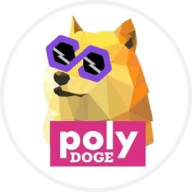L'émergence d'Ethereum a révolutionné le marché des crypto-monnaies, en ouvrant la voie au développement des applications décentralisées (dApps).
DappRadar (RADAR) est une plateforme dédiée à l'offre d'informations précieuses sur le monde des dApps. En fournissant des données et des analyses complètes, DappRadar vise à améliorer la transparence et à permettre aux utilisateurs de naviguer dans le paysage en évolution rapide des applications décentralisées.
Qu'est-ce que c'est DappRadar?
DappRadar est une plateforme basée sur la blockchain qui offre des données et des statistiques précises et opportunes sur le marché des dApp. Avec pour mission de lutter contre les informations trompeuses, DappRadar offre aux utilisateurs un site d'agrégation de données de marché fiable et complet.
Les données DApp fournies sur DappRadar sont présentées sous forme de classements et de portefeuilles, en fonction du type et de la nature de la dApp. La plateforme fournit également des informations sur tokens non-fongibles (NFTs) et le plus grand marché de la finance décentralisée (DeFi).
L'équipe de DappRadar
DappRadar a été fondé par Skirmantas Januśkas et Dragos Dunica, qui occupent tous deux les fonctions de PDG et de CDO, respectivement. Le projet basé sur la blockchain compte également dans son équipe fondatrice Patrick Barile (COO), expert expérimenté en crypto et blockchain. DappRadar est soutenu par certaines des principales sociétés de capital-risque du secteur, telles que Blockchain Ventures, Nordic Ninja et Prosus Ventures.
Comment fonctionne DappRadar?
DappRadar fonctionne grâce à un site web convivial, simple à naviguer et entièrement gratuit. Son accessibilité l'a positionné comme un outil indispensable pour les traders désireux d'obtenir des informations plus approfondies sur les marchés émergents de la blockchain marché dApp. Avec son orientation globale et sa nature décentralisée, l'application DappRadar apporte de nombreux avantages à ses utilisateurs.
L'un des principaux atouts de DappRadar est sa flexibilité. Les utilisateurs ont la possibilité de suivre sans effort et en toute sécurité plus de 3 000 dApps sur un large éventail de blockchains. En outre, la plateforme offre une fonction de suivi de portefeuille qui permet aux utilisateurs de surveiller leurs gains et pertes quotidiens, ainsi qu'une vue d'ensemble de leurs avoirs.
Le token natif de DappRadar: RADAR
Lancé en 2021, RADAR est le token natif du projet. Il a été conçu pour permettre aux utilisateurs d'accéder à toutes les fonctionnalités intéressantes de la plateforme. RADAR sert également de token de récompense qui sera partagé proportionnellement entre les membres de la communauté pour leur contribution à la croissance de la plateforme.
En outre, RADAR est le fondement de la plateforme DappRadar organisation autonome décentralisée (DAO) écosystème, en agissant comme un governance token.
La tokenomics de RADAR
L'offre totale de tokens RADAR est de 10 milliards, en adhérant à la norme ERC-20 sur la blockchain Ethereum. RADAR vise à encourager l'engagement de la communauté et à fournir des incitations pour une participation active, en garantissant un écosystème dynamique et durable pour toutes les parties prenantes.
Comment faire du staking sur RADAR
Le staking est un aspect important de l'écosystème DappRadar. Il permet aux détenteurs de tokens d'obtenir des récompenses spécifiques pour bloquer des fonds pendant une certaine période. Vous pouvez faire du staking sur RADAR soit en tant que membre régulier, soit en tant que membre PRO, ce qui signifie que vous avez la possibilité d'engager un minimum de 5 000 et 30 000 RADAR, respectivement.
Pour commencer, visitez le site web de DappRadar. Allez dans l'onglet "Staking" et choisissez une option d'adhésion préférée. Connectez votre portefeuille au réseau, sélectionnez la quantité de RADAR à faire du staking et finalisez le processus. Une fois le processus terminé, vous pouvez commencer à gagner des récompenses en tant que membre de DappRadar.
Cas d'utilisation de RADAR
RADAR permettent aux détenteurs d'accéder aux fonctionnalités de la plateforme, servent de paiement pour les transactions, permettent aux développeurs de créer des applications et offrent des droits de vote dans l'écosystème.
Distribution de RADAR
RADAR sont distribués comme suit :
- 40 % ont été alloués aux membres fidèles de la communauté.
- 25,25 % ont été mis de côté pour l'équipe de DappRadar et les actionnaires.
- 24,75 % sont allés à la trésorerie de DappRadar, qui couvre les dépenses de développement, de collecte de fonds, de partenariat et de marketing.
- 10 % ont été distribués lors du premier airdrop.
L'avenir de DappRadar
DappRadar s'engage à assurer la durabilité de sa plateforme en fournissant constamment des mesures de marché précieuses et précises aux développeurs, aux utilisateurs et aux parties prenantes du marché émergent des dApps. En fournissant des informations approfondies, des graphiques, des statistiques et des données, DappRadar vise à être une source d'information fiable et de confiance. La plateforme s'efforce également de s'adapter continuellement aux tendances du marché et d'améliorer ses services, en garantissant ainsi sa pertinence et son utilité à long terme.



















Données sociales